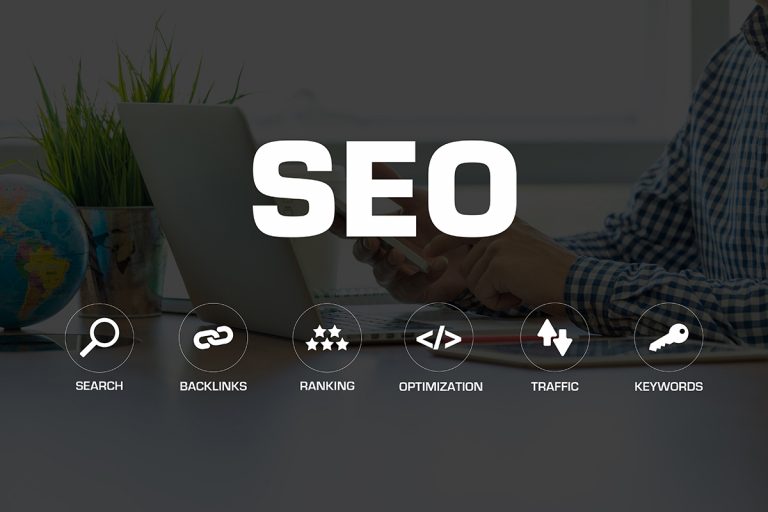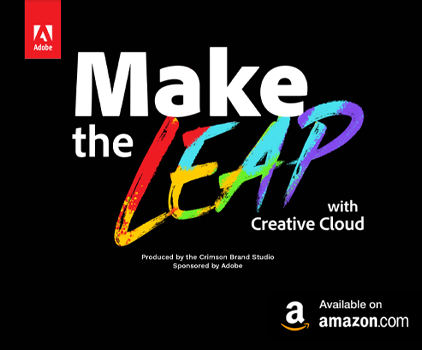Key Takeaways
- Custom website costs vary based on project complexity, design, development team, and ongoing maintenance needs.
- Investing in good design and user experience boosts engagement and conversions, essential for business growth.
- Options include in-house teams, freelancers, or agencies, each affecting cost, control, and expertise.
- Set a realistic budget, prioritize key features, communicate clearly with developers, and consider cost-saving alternatives like pre-built themes and open-source solutions.
In today’s digital age, forget “nice to have” – a website is a must-have! Think of it as your own virtual shop window, a one-stop hub for everything you do, and a direct line to connect with the people you want to reach.
With a custom website, you get to design and build something truly unique that perfectly fits your vision. This lets you create an amazing experience for visitors that reflects the heart of your brand and helps you reach your business goals.
But how much does a custom website actually cost? That’s a tricky question. Building a website involves a bunch of moving parts, and each one affects the final cost. This guide will break down various things that can affect your website’s price tag and help you budget for your online project like a pro.
Website Development Cost Factors
Building a custom website is exciting, but like any project, it can vary in cost. Here’s the thing: the fancier and more complex your website, the more it will typically cost. Just like smartlydone.com and other awesome web professionals, everyone approaches pricing a little differently, but here are some factors that generally play a big role:
- Project Scope & Complexity
The complexity of your website can range from a simple brochureware site with basic information about your company and contact details to a full-blown e-commerce platform with extensive product listings, shopping cart functionalities, and user account management.
Websites with more interactivity and dynamic features will naturally require more development time and expertise, translating to higher costs. Here’s a breakdown of website types and their corresponding cost ranges to give you a general idea:
Brochureware Websites
These are basic informational websites that typically include a few pages showcasing your company profile, services offered, and contact information. Brochureware websites are a good option for small businesses or startups with a limited budget.
Landing Page Websites
Landing pages are designed with a single goal in mind, such as capturing leads or promoting a specific product or service. They are typically shorter and more focused than brochureware websites, but may still include interactive elements like lead capture forms or video embeds.
Content Management System (CMS) Websites
A CMS website allows you to easily add, edit, and update website content without needing any coding knowledge. This makes them a good option for businesses that plan on regularly updating their website with fresh content. The cost of a CMS website can vary depending on the chosen platform, customization needs, and required features.
E-commerce Websites
E-commerce websites allow you to sell products or services online. They require additional functionalities like shopping carts, secure payment gateways, and product databases. The complexity of your e-commerce website will significantly impact the development cost. Basic e-commerce platforms can start around USD$5,000, while feature-rich stores with custom functionalities can reach costs of USD$50,000 or more.
Custom Web Applications
Complex web applications go beyond basic websites and often involve features like user accounts, custom dashboards, and integration with external databases. These projects require specialized development skills and typically have the highest cost range, starting at USD$10,000 and potentially reaching six figures or more, depending on the complexity.
The features and functionalities of a website significantly impact development time and cost. For instance, integrating contact forms, booking systems, custom animations, or third-party APIs adds to the complexity and expense. Additionally, content creation, including text, images, and videos, is a separate cost factor that should be considered.
- Design & User Experience (UX)
Website design plays a critical role in user engagement and conversion rates. A visually appealing and user-friendly design can attract and retain visitors, ultimately driving business growth. Custom design elements such as unique layouts, illustrations, and animations enhance the overall aesthetic and functionality of the website but also increase development costs.
User experience (UX) design focuses on creating intuitive and seamless interactions for users. Good UX design ensures that the website is easy to navigate, loads quickly, and provides a pleasant experience for visitors. Investing in UX design is essential for website usability and can significantly impact development costs. A well-designed website can lead to higher user satisfaction and better conversion rates.
- Development Approach & Team
The development approach and team composition are crucial factors influencing website development costs. Businesses can choose between in-house development, hiring freelancers, or working with a web development agency:
In-house Development
Building a website with an in-house team provides greater control over the project but can be more expensive due to salaries, benefits, and overhead costs.
Freelancers
Hiring freelancers can be a cost-effective option, especially for smaller projects. However, it may lack the consistency and reliability of an agency or in-house team.
Web Development Agencies
Agencies offer comprehensive services, including design, development, and marketing. They provide expertise and a streamlined process but often come at a higher cost.
Developer experience and location also impact development rates. Developers in regions with a lower cost of living may charge less, while highly experienced developers command higher rates. Additionally, involving specialists such as copywriters, SEO experts, and graphic designers adds to the overall cost.
- Ongoing Maintenance & Updates
Websites are not static entities. Regular maintenance is crucial to ensure your website’s continued functionality and security. This includes:
Security Updates
New vulnerabilities and security threats are discovered regularly. Timely application of security patches and updates is essential to safeguard your website from hackers and malware attacks.
Plugin Compatibility
Many websites rely on plugins to add functionalities or enhance user experience. Regular plugin updates are necessary to ensure compatibility with your website’s core software and avoid potential conflicts.
Performance Optimization
Over time, websites can accumulate clutter and become slow to load. Regular performance optimization helps ensure your website loads quickly and delivers a positive user experience.
Content Updates
Keeping your website content fresh and up-to-date is essential for maintaining user engagement and improving search engine ranking.
The cost of ongoing maintenance can vary depending on the complexity of your website and the frequency of updates required. Some website development companies offer maintenance packages that can help you budget for these ongoing costs.
Website Builder vs. Custom Development
Website builder platforms offer an alternative to custom development, providing pre-built templates and drag-and-drop functionality for easy website creation.
Advantages of Website Builders:
- Affordability – Website builders are generally more affordable than custom development. Monthly subscription plans range from USD$10 to USD$50, including hosting and domain registration.
- Ease of Use – Website builders offer user-friendly interfaces, allowing individuals with little technical knowledge to create and manage websites.
- Pre-Built Templates – Templates provide a quick and easy way to set up a website with minimal customization.
Limitations of Website Builders:
- Design Limitations – While website builders offer various templates, customization options are limited compared to custom development.
- Customization Restrictions -Advanced features and functionalities may not be possible with website builders, limiting the website’s scalability.
- Scalability Issues – Website builders may not be suitable for large or complex websites requiring extensive customization and advanced functionalities.
Budgeting Tips for Your Custom Website
Setting a realistic budget is crucial for the successful development of a custom website. Below are some tips you can consider:
- Set Realistic Expectations
The first step is to be honest about your project’s needs. Consider the following factors to get a clearer picture of the scope and potential cost involved:
Website Type
A simple brochureware site to showcase your portfolio will require less development time and resources compared to an e-commerce platform with features like shopping carts, secure payment gateways, and user accounts. Likewise, a blog-focused website will have different needs than a data-driven web application.
Features and Functionality
Make a list of all the features you envision for your website. This could include things like contact forms, booking systems, photo galleries, social media integration, and custom animations. The more complex and interactive the features, the more time and expertise they’ll take to develop, translating to higher costs.
Content Needs
Website content plays a crucial role in user experience and engagement. Do you have existing content you can leverage, or will you need to factor in the cost of content creation (text, images, videos) during the development process?
Once you have a clear understanding of your website’s core functionalities and content needs, research average website development costs in your industry. This will give you a realistic benchmark to set your budget and avoid sticker shock later on. Remember, it’s always better to under-estimate than over-estimate your website budget. A little buffer room allows for unexpected additions or minor adjustments during development.
- Prioritize Essential Features
Focusing on the most critical features that will impact your website’s functionality and user experience is crucial:
Define Core Functionalities
List the essential features your website must have to achieve its primary goals. These might include user login systems, shopping carts, payment gateways, or booking systems.
Separate Nice-to-Have Features
Identify additional features that would be beneficial but are not essential for the initial launch. These can be added later as your budget allows.
Phased Development
Consider a phased development approach where the core features are developed first, and additional features are implemented in later phases. This helps manage costs and allows you to launch the website sooner.
For instance, an e-commerce site might start with basic product listings and checkout functionality, then later add advanced search filters and user reviews.
- Communication is Key
Clear communication with your developer is vital for staying within budget. Here are some specific ways to ensure smooth communication and avoid scope creep:
Clearly Defined Project Scope
Before any development work begins, have a detailed conversation with your developer about the project scope. This includes outlining the specific features and functionalities you require, the desired timeline for completion, and your budget constraints. A well-defined scope of work serves as a roadmap for the project and helps prevent misunderstandings down the road.
Detailed Requirements Document
Create a comprehensive requirements document that outlines all your website’s functionalities, content needs, and design preferences. This document should be a collaborative effort between you and your developer, ensuring everyone is on the same page from the outset.
Regular Communication
Maintain open and consistent communication channels with your developer throughout the project lifecycle. Schedule regular meetings or calls to discuss progress, address any concerns, and ensure the project stays on track.
Change Management Process
Inevitably, some changes may arise during development. Establish a clear change management process with your developer upfront. This will define how new feature requests or modifications will be handled, and how any associated costs will be communicated and approved.
Regular communication throughout the development process also allows for early identification and course correction of any potential issues that could lead to cost overruns.
- Explore Alternative Solutions
Consider alternative solutions to potentially reduce costs without compromising quality:
Pre-Built Themes
Using pre-built website themes can save on design and development costs. Many themes offer a high level of customization, allowing you to tailor the look and feel to your brand.
Junior Developers
Hiring junior developers can be a cost-effective option. They often charge lower rates than experienced developers but can still deliver quality work under proper supervision.
Hybrid Approach
Combine custom development with pre-built elements. For example, use a pre-built content management system (CMS) like WordPress but customize the design and functionality to meet your specific needs.
Open-Source Solutions
Leverage open-source platforms and tools that are free to use and have a large community of developers contributing to them. This can significantly reduce development costs while providing robust and scalable solutions.
Building a website for your business is an investment for its future. By setting realistic expectations, prioritizing ruthlessly, communicating clearly, and exploring alternative solutions, you can create a website that meets your needs and stays within your budget. Remember, a well-planned website doesn’t have to come with a hefty price tag.
Conclusion
The cost of a custom website can vary greatly depending on the factors discussed above. While creating a custom website represents an investment, a well-designed and developed website can provide long-term benefits for your business. By understanding the cost drivers and following these budgeting tips, you can plan and build a website that meets your needs and delivers a strong return on investment.










